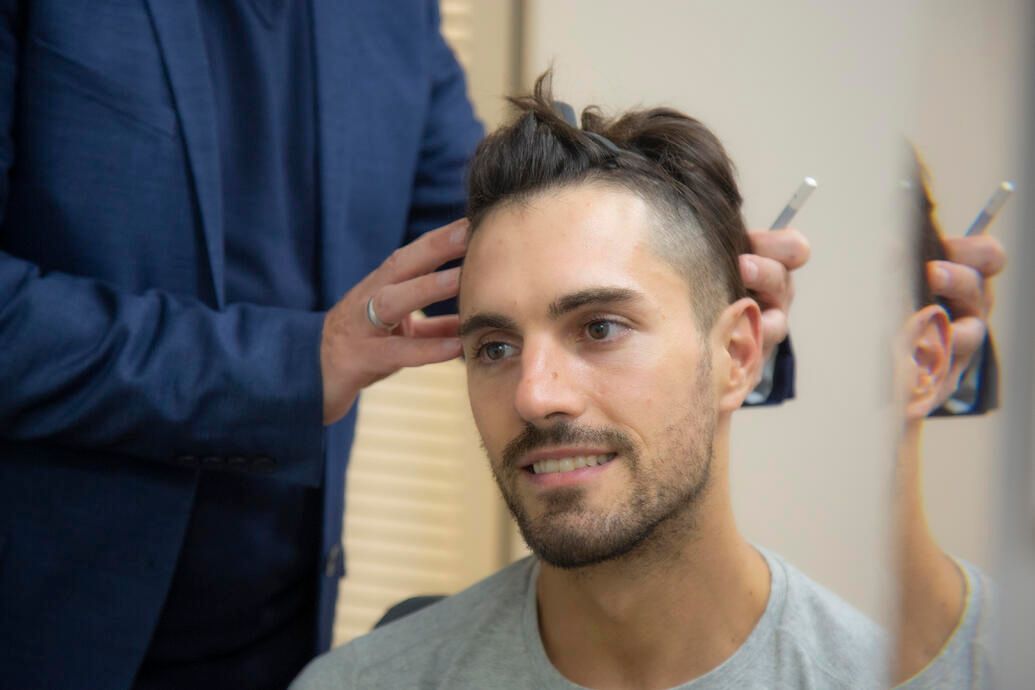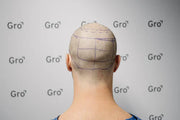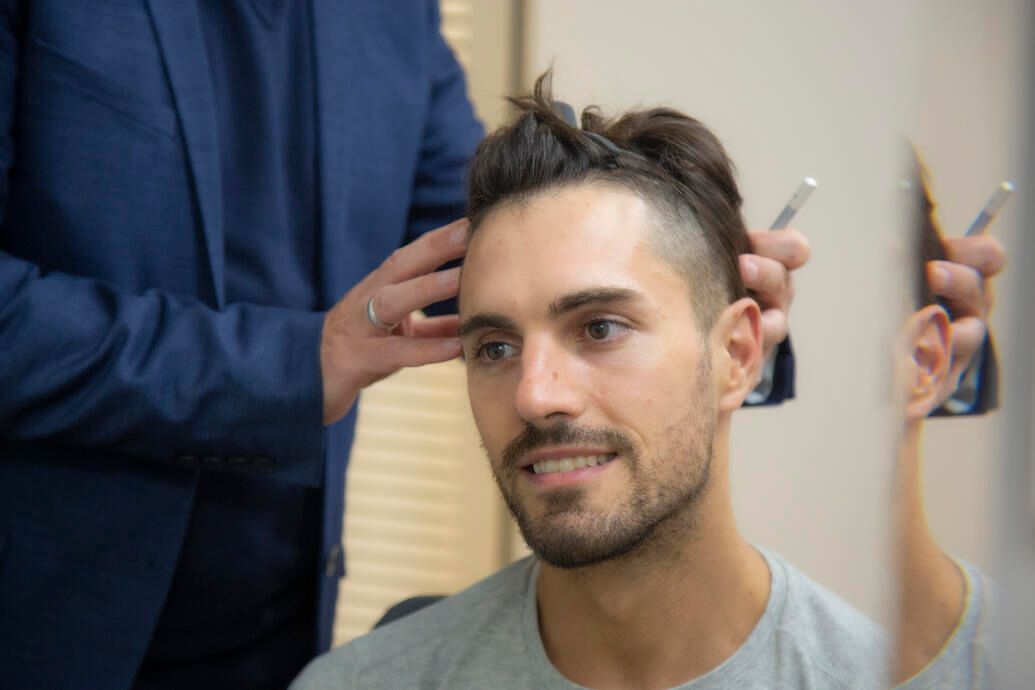Wig, toupee, hair rug, hairpiece… no matter what you call it, hair systems have come a long way from their humble beginnings. These days, wearing hair extensions is so common we think nothing of it. However, there’s a whole other level of stigma attached to wearing a hair system to cover up hair loss.
Hair loss can be a very emotional experience, which is why many people seek a solution that’s more convenient and permanent than a hairpiece. Improved technology means better glue and better fitting, but there'll always be that fear of losing your hair system… in public.
If a hair transplant is not an option, you may be tossing up between a hair system and a scalp micropigmentation procedure. In this article, we discuss the pros and cons of these two hair loss solutions.
If you have hair loss, answer these 3 questions to discover the best treatment option for you.

Hair systems – the good, the bad and the ugly
Hair systems can certainly give you the most impressive hair you’ve ever had. A full head of hair without lotions, medications or procedure – sounds pretty good, right? As with any hair loss solution, there are some drawbacks, including:
- The cost of a good hair system (with a second one for backup) can add up to thousands
- The maintenance costs of a hair system add up over time
- Always being conscious of its placement and needing to stick down the hairline occasionally
- In Australia, wearing one can get unbearably hot
- Highly likely to impact the way you live your life and the activities you do
- Fear of water is to be expected
- The prospect of it being discovered can cause anxiety or stress
Most people would prefer the freedom of not wearing a hair system – no anxiety of it being discovered, no more routines and maintenance. But what is the alternative? Many people are turning to scalp micropigmentation as an option.
What is scalp micropigmentation?
Scalp micropigmentation (also known as SMP) is used to cover up both hair loss and sparse hair. It gives the impression of a shaved - but full - head of hair.
In SMP, tiny dots are ingrained on the scalp, creating the illusion of a scalp densely populated with hair follicles. This is also known as Cosmetic Hair Follicle Replication. It’s not a tattoo, nor a form of cosmetic makeup.
To achieve a thickening effect, micropigmentation is applied in between existing hair follicles to make the hair appear denser. Or, it can be used on a bald area to create a short-shaven look. It’s a semi-permanent treatment lasting 3-5 years.
The results are immediate, with people generally able to achieve the look they want in 2-3 sittings. Micropigmentation is also a painless alternative to cosmetic tattooing for thinning eyebrows.
Micropigmentation expected results
People dealing with androgenetic alopecia can use SMP as a non-invasive and pain-free solution to hair loss. As with any hair loss treatment, it’s important to choose your treatment provider carefully. Otherwise, you run risks such as the results fading or changing colour.
The ink used should be closely matched to your hair colour for unnoticeable results. With a shaved head, micropigmentation will give the appearance of growing stubble. Micro-pigmentation in between existing hair, on the other hand, will create the illusion of having more dense hair on the scalp.
If you want to also have a hair transplant in the future, it's important to plan an SMP hairline that can be achieved with the donor hair you have. With patients who have limited donor hair, SMP can also be used after a hair transplant to create a denser look.
What about growing back your natural hair?
Both scalp micropigmentation and hair systems come with their limitations – neither will grow back your own, natural hair. The only way to grow back lost hair to areas that have gone bald is with a hair transplant.
At Gro, our hair transplants involve no cutting and no scarring. This modern technique uses your own hair follicles from areas resistant to balding to restore hair where it has been lost. If you’re considering hair loss treatment, come and talk to us about your options.

Get in touch with your local clinic:













